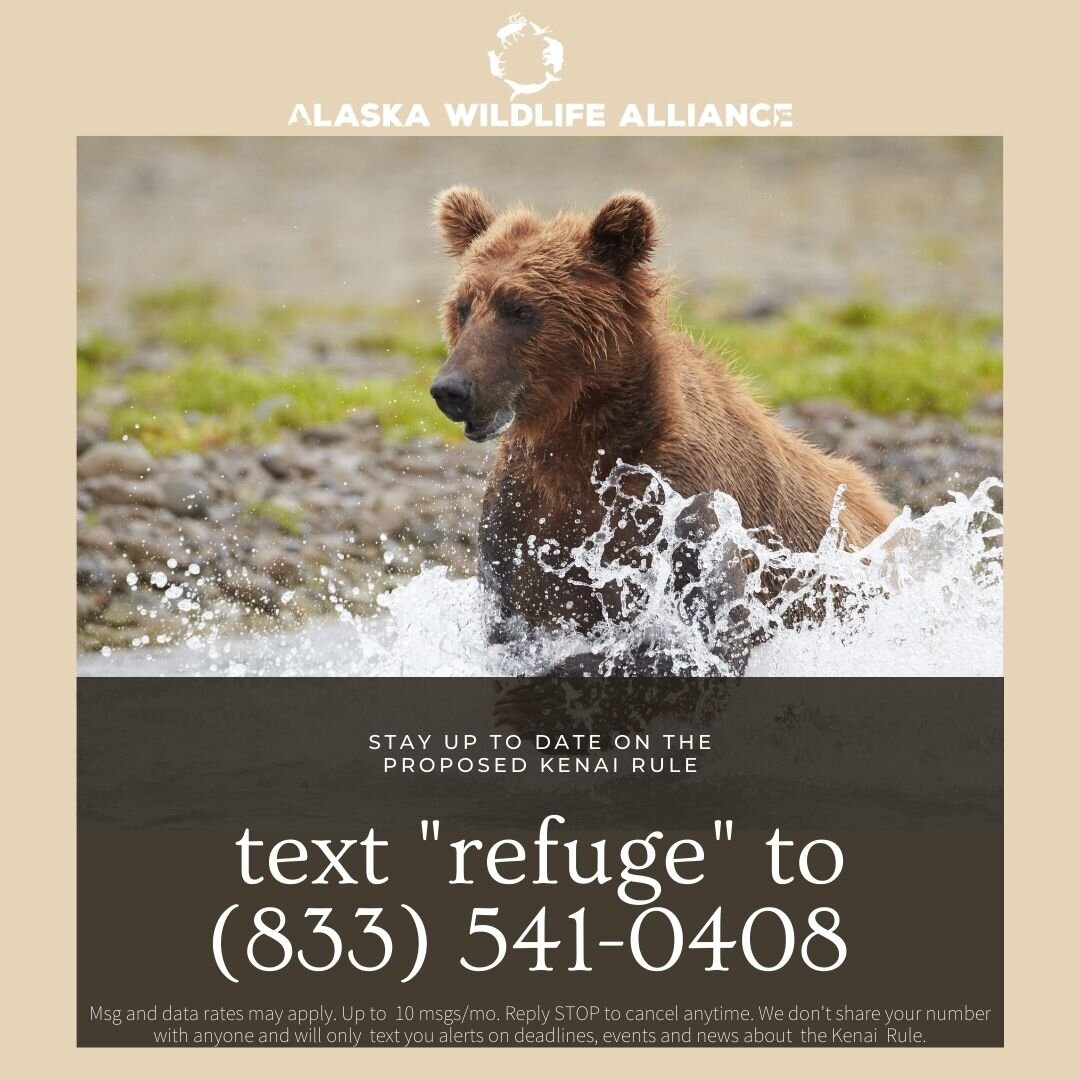|
Comment template
You can use the text below as a template for your comment. You can also comment on the other regulations in the rule, such as bikes, motorized vehicles, and game cart access. Personalize your comment to speak directly to your use of the Refuge and your values around public lands and wildlife management.
Dear Fish and Wildlife Service,
[Write some background about you and why you care about the Kenai National Wildlife Refuge, wildlife, these rules]
I oppose the proposed regulation that would allow the baiting of brown bears on the Kenai National Wildlife Refuge. The Kenai National Wildlife Refuge was created to protect wildlife in its natural diversity, including natural predator-prey relationships. The state’s goal in promoting bear baiting is to increase moose populations by keeping bears scarce. This goal is inconsistent with the purpose of the Refuge.
Authorizing hunters to attract Kenai brown bears with bait, then shoot them like fish in a barrel, is a disgrace – especially on National Wildlife Refuge System lands. Conserving Kenai brown bears and all of the Refuge’s wildlife is why the refuge exists. Kenai brown bears are a small, genetically distinct population because of their geographic isolation from mainland Alaska. Kenai brown bears are already struggling because of increased mortality on nonfederal lands and continued development on the Kenai Peninsula. Brown bear baiting on the refuge will place the already vulnerable Kenai brown bears at further risk. Do not defer to the state of Alaska’s 19th century management approach defined by aggressive predator killing to benefit prey species.
I also oppose the proposed elimination of requiring a federal trapping permit. The current federal trapping permit was locally designed to keep trappers accountable, reduce incidental catch, minimize suffering for wildlife caught in traps, and secure conservation provisions for beaver, red fox, lynx and American marten. Abolishing the requirement for a federal permit for trapping also opens new areas of the refuge to trapping—including areas within a mile of campgrounds and publicly accessible trailheads. This puts other refuge visitors—for example, people hiking with their dogs—at greater risk of accidentally encountering a trap. Finally, if the requirement to obtain a federal trapping permit is revoked, the Refuge would not be able meet its legislative mandates to conserve all wildlife species and provide for safe fish- and wildlife-oriented recreation.
Thank you for your consideration of my comment.
Name











